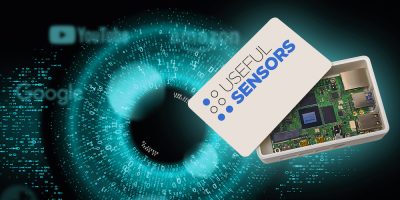The MX60 series of contactless connectivity solutions have been developed to ease device pairing, streamline design engineering and boost product reliability, said Molex.
These low power, high speed, solid state devices feature miniaturised mmWave RF transceivers and built-in antennas in a single package. They deliver faster, simpler, device-to-device communications without the use of physical cables or connectors, said the company. The MX60 solutions can offer seamless device pairing and increased communications reliability for video displays, sleek and light consumer electronics, industrial robotics and devices operating in harsh environments, the company continued.
The MX60 series is based on wireless chip-to-chip technology and more than 350 filed patent applications acquired in 2021 with the purchase of core technology and IP from high-speed, contactless connectivity company, Keyssa. The acquired technology operates at data rates from 1,0 to 5.4Gbits per second on the 60GHz band with no Wi‑Fi or Bluetooth interference.
The first models in the MX60 series replace traditional DisplayPort, Gigabit Ethernet and USB SuperSpeed connectors to reduce development time, cost and risk, explained Molex. An integrated retimer optimises signal integrity at higher data rates.
A space-saving, contactless solution that provides USB2 and other low-speed interfaces is currently in development.
“Every piece of real estate counts when designing smartphones, AR/VR glasses, smartwatches and other consumer devices,” said Walter Rivera, senior manager, wireless connectivity product manager for the Micro Solutions business unit at Molex. “By combining USB2 and other low-speed interfaces in one contactless solution, we will offer product developers a critical head-start as they won’t have to worry about fitting extra components into ever-shrinking form factors,” he added.
The MX60 series also improves the durability of products exposed to harsh environmental conditions, such as dust, moisture and corrosion. The series addresses a variety of applications and devices, including smartphones, AR/VR glasses, tablets, self-driving vehicles, video walls, industrial robotics, medical wearables and wireless docking stations.
The sealed, contact-free solutions provide significant benefits over physical metal-to-metal contacts which can degrade over time and impact product performance and reliability, claimed the company. The contactless connectivity solutions are less prone to risks associated with ingress and repeated motion, including high-vibration and rotational products. The ability to remove diagnostic ports on wirelessly charged devices also can reduce development and production costs while boosting overall product reliability.
Production samples are available for MX60 USB SuperSpeed products, for high vibration and harsh environments, including mobile devices and networking applications, MX60 Gigabit Ethernet, for wireless infrastructure, industrial automation, medtech and networking applications and MX60 DisplayPort main and auxiliary, the high speed replacements for conventional DisplayPort connectors.
Plans are underway to expand the MX60 series further by leveraging Molex’s mmWave antenna, high-speed signal integrity and volume manufacturing expertise.







